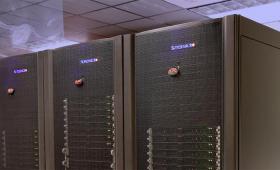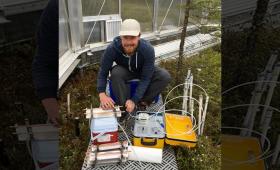Livermore houses four of the world’s 100 most powerful supercomputers, more than any other institution according to the TOP500 list.
Science and Technology Highlights

A long time ago — roughly 4.5 billion years — our sun and solar system formed over the short time span of 200,000 years.

Livermore has deployed “Ruby,” a high performance computing cluster that will perform functions for the National Nuclear Security Administration and support the Laboratory’s COVID-19 research.

Livermore, Total, and Stanford University are releasing an open-source, high-performance simulator for large-scale geological carbon dioxide storage.

Livermore and its partners AMD, Supermicro and Cornelis Networks have installed a new high-performance computing (HPC) cluster with memory and data storage capabilities optimized for data-intensive COVID-19 research and pandemic response.

Livermore scientists and collaborators have created a new conceptual framework as well as a simulation model that traces the path of individual carbon atoms as they interact with the environment.

Livermore researchers have adapted a new class of materials for their groundbreaking volumetric 3D printing method, greatly expanding the range of material properties achievable.

A research team has identified paleowater—water that recharged before the Holocene started 12,000 years ago—using three key isotopic indicators of groundwater residence time

Medical practitioners may be able to improve existing treatment methods and develop new personalized ones for brain aneuryms, thanks to researchers at Livermore and their outside collaborators.

LLNL has installed a state-of-the-art artificial intelligence accelerator from SambaNova Systems, allowing researchers to more effectively combine AI and machine learning with complex scientific workloads.


